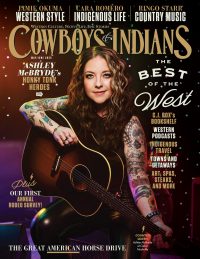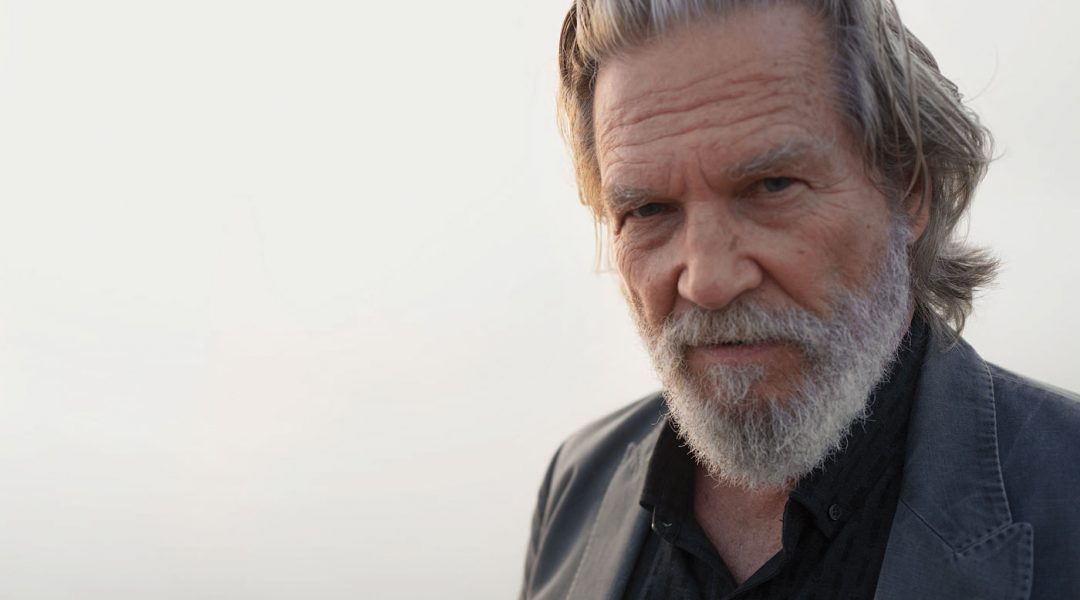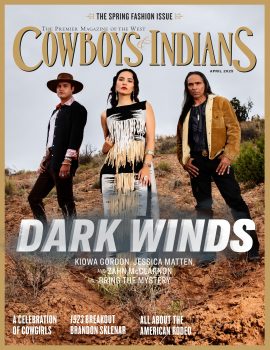We chat with Oscar-winning actor Jeff Bridges about westerns, time spent in Montana, charitable work, and his role in the true-life firefighter drama Only the Brave.
Don’t be too fooled by the genuine, relaxed air of the man. The waggish warmth, seasoned with many an easygoing chuckle. The naturally husky, happy-go-lucky voice that could make a Zen fountain sound stressed-out by comparison.
All the apparent mellowness in the world can’t hide the fact that it must take serious time, energy, and doing to be Jeff Bridges.
Plus gobs of unpretentious talent. Piles of natural curiosity. Oodles of additional creative pursuits. And, most important, heaps of heart. Enough to champion the cause of ending childhood hunger in his spare time and save a bunch of bees nesting in his wall from their usual fate. But let’s not get ahead of ourselves.
“Back when I was younger, for a long time I didn’t really know if I wanted to get into acting because I had all these other interests,” the 67-year-old Oscar winner tells us from the vantage point of a career that has garnered every top honor and treated us to so many memorable, wildly different dudes on screen.
Lightfoot, Lewis Tater, and Jeffrey Lebowski. Bad Blake, Wild Bill Hickok, and Rooster Cogburn. Jack McKee from Rancho Deluxe. Jack Forrester from Jagged Edge. Jack Baker from The Fabulous Baker Boys. Starman and Seabiscuit. The Fisher King and Fearless. And so on.
Sharing a gene pool with acclaimed actors beginning with father Lloyd and mother Dorothy, Bridges made his first big-screen appearance as a baby in The Company She Keeps (1951), followed by numerous youthful appearances along with big brother Beau in their father’s television series Sea Hunt and The Lloyd Bridges Show.
More than half a century later, who isn’t grateful that Jeff Bridges stuck with the family business and put his own diverse, remarkable stamps on it?
Nearing the release of his latest film, Only the Brave, which chronicles the true story of elite firefighters battling Arizona’s disastrous Yarnell Hill wildfire, we reached Bridges at his office in Montecito, California, where the actor resides when he’s not escaping to the family’s Montana ranch or immersed in his next role. Shooting the breeze with Bridges — a skilled musician, photographer, philanthropist, raconteur, and renaissance man — is a leisurely experience, but also a deceivingly supercharged one.
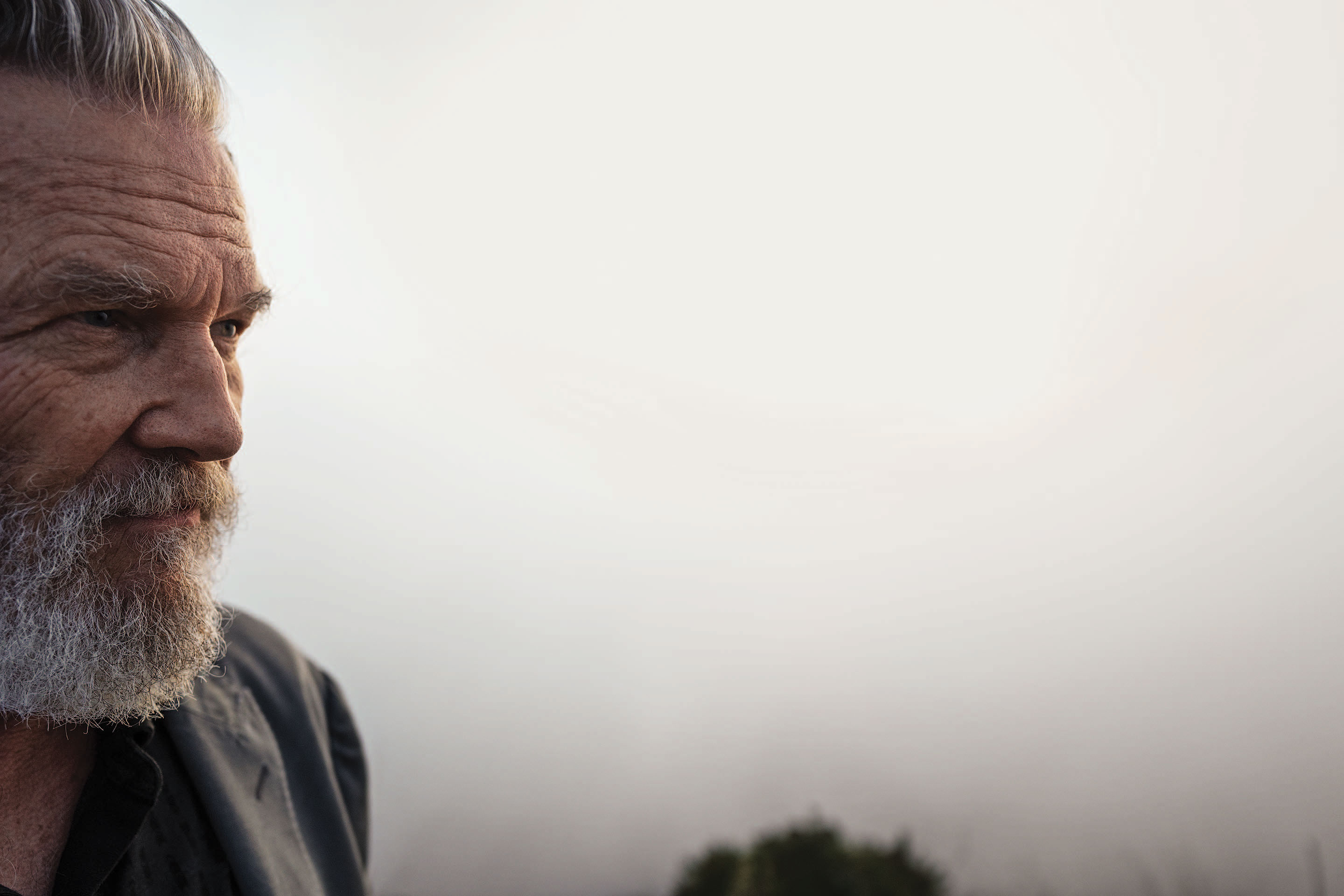
PHOTOGRAPHY: Alan Kozlowski
Cowboys & Indians: According to our latest rough tally, Only the Brave marks your 72nd major film acting credit since your breakout role as Duane Jackson in 1971’s The Last Picture Show, which means we’re now officially having a tough time keeping track of all the memorable characters you’ve played over the years.
Jeff Bridges: Oh, me too. I’m telling you, at this point, the order of my life is done in movies. That’s seriously how I remember things these days. “Who was I playing back then?”
C&I: In Only the Brave, you play another Duane, Duane Steinbrink — a real guy. Can you tell us about him?
Bridges: Duane Steinbrink was the wildland division chief for the city of Prescott, Arizona. He’d retired a year before the fire [2013’s devastating Yarnell Hill fire on which the movie is based]. But he was largely responsible for getting the [Granite Mountain] Hotshots together — this young, incredibly brave crew of specialist wildfire fighters. And he was the mentor of their superintendent, Eric Marsh, the guy that Josh Brolin plays in the movie. Duane worked closely with that whole crew.
C&I: Did you get to meet the real Duane?
Bridges: Oh, yeah. We hung out quite a bit. The real Duane turned out to be this great, gregarious, incredibly generous guy who was totally open to sharing whatever he could to help me get into the part. Even his clothes—I think I was wearing his belt at one point. [Laughs.] I even got to play with his band, the Rusty Pistols. Meeting him was certainly a highlight for me, immensely valuable to the role, and just wonderful in every way.
C&I: What initially attracted you to this project?
Bridges: Well, I guess the first thing that caught my attention was that it came to me from [director] Joe Kosinski, who I’d worked with before on the Tron sequel. I’d really enjoyed that experience and I’m an admirer of his work, so I wanted to pay attention to what he’d sent me. But then, reading about these brave, brave guys — I just got immediately hooked on wanting to tell a story about this heroic crew that goes right into what everyone else wants to avoid. That’s the natural thing, right? You see a big fire, and you head in the opposite direction. But here’s this amazing brand of people who are willing to put their lives on the line to protect society as a whole. Not just their loved ones, but people they don’t even know. And the courage it takes to do that. And also the exhilaration. And the sense of togetherness and family and unity when you work with a group like that.
C&I: And the potential consequences. In this case, the greatest loss of firefighters since 9/11. What do you hope audiences take away from this film?
Bridges: Well, definitely appreciation for these people who protect us like this. And their courage and the personal challenges they go through. The story is certainly a tragic one, but it really centers on the heroism of these guys — and also their humanness. It doesn’t just paint some perfect picture. These guys are fighting fires but they’re also fighting other inner turmoils in their personal lives. And hopefully this invites the audience to look inside themselves and connect with that too.
C&I: A film like this — recreating an epic wildfire — comes with all sorts of big technical challenges. There must have been some emotional ones too, for the cast and crew and especially the tightknit firefighters and community the movie aims to honor and represent. Was there a broader connection made here as well?
Bridges: Oh, very much so. On a movie like this, everyone’s conscious of the real-life struggle and grieving still going on, and that residual pain, guilt, and all kinds of suffering happening beneath the surface. I remember working on another movie about 20 years ago that dealt with a terrible real-life tragedy — at sea. White Squall. Two of the real guys who went through that whole experience were on the set for most of the shoot. It turned out to be very cathartic for them to be a part of the production and to bring those painful times back up. And maybe even helped achieve some kind of closure. I mean, there’s never closure with something like this. Y’know, we suffer and we grieve, and then we long to get back to our lives — which is a good thing. But I think there’s also a lingering residue, almost like a low-grade infection. You can’t ever really get rid of it. But to have it acknowledged with dignity and love — well, that helps to heal in a deeper way. And hopefully that’s what Only the Brave ’s effect will have too.
On this film we had the sole survivor, [firefighter] Brendan McDonough with us — and I believe he has a small part in the movie as well. He represents, along with my guy Duane, the real guys, who went through it. And I’m happy to learn that Brendan is pleased with the film and feels that it’s an honorable presentation of what these guys went through. So to be working on a film like this and connected to a person who actually went through it all and who’s involved in the project — that’s an experience beyond words. I was also happy to know that the production company is working on some charitable way to help support the legacy of these heroes.
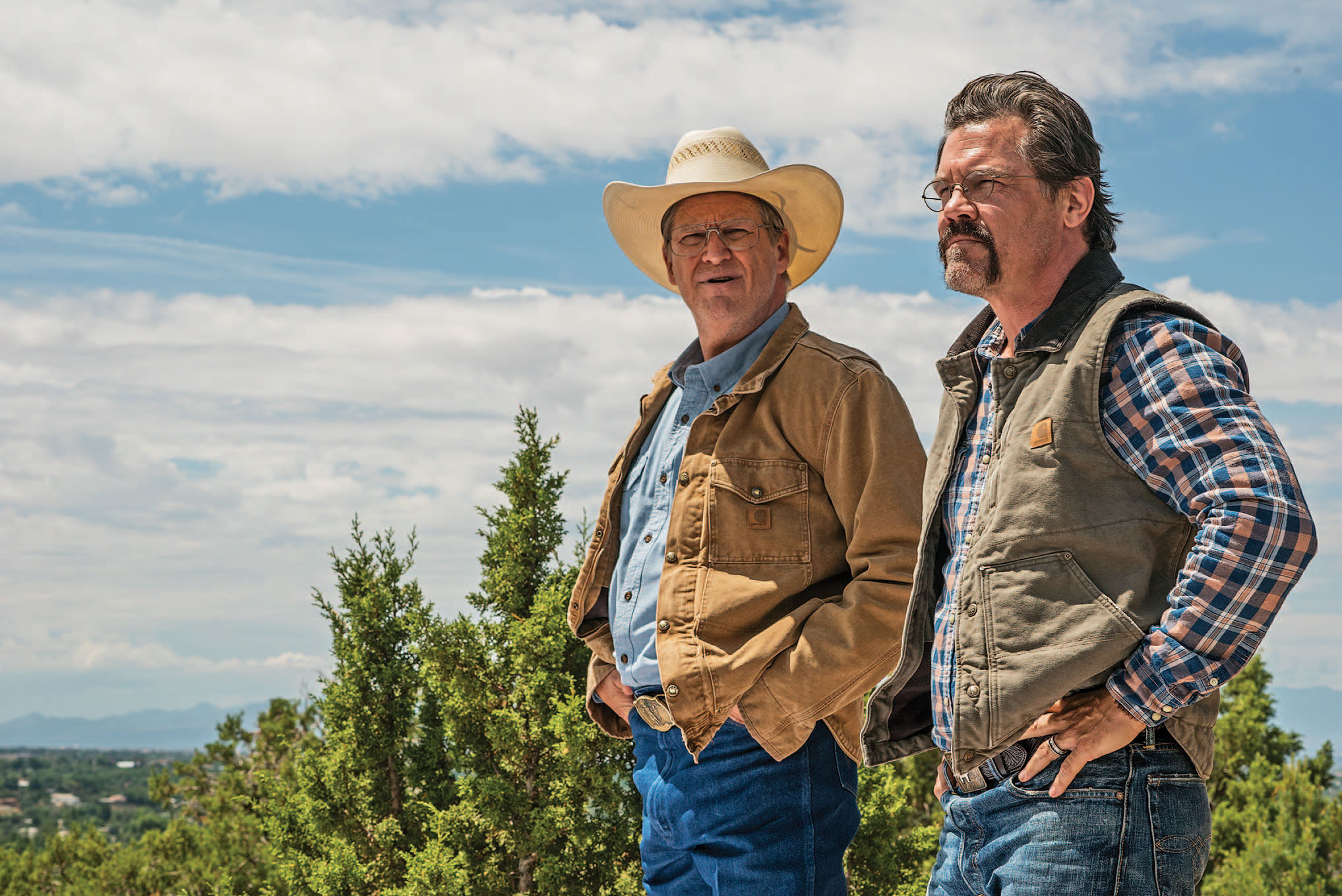
PHOTOGRAPHY: Richard Foreman/Courtesy Sony Pictures
C&I: The subject matter couldn’t be more relevant. All over the drought-plagued West, including near your own home around Santa Barbara, devastating wildfires are routinely in the headlines. You grew up in Southern California. Do you remember this much news about wildfires back then, or are things heating up from where you’re sitting?
Bridges: Well, some places have had that risk attached to them for quite a long time. Back in the mid-’80s, my wife and I lost our house in a Malibu fire, which has always been a tinderbox. But overall, it certainly seems to have picked up. Within the last five years or so, I’ve lost 400 acres to wildfire in Montana where we have a ranch. While I was away on films, my wife was evacuated three times. Overall, I’d say we’re the fortunate ones. We survived and came through several fires in better condition than we could’ve. I’ve actually done a little firefighting myself out there. Nothing to the degree of the Hotshots. But up in Montana, there were fires all around a friend’s house and I got into it a little bit.
C&I: You’ve taken on so many different roles. What makes a character leap off the page for you? What makes you think, I wanna do this?
Bridges: Well, I’m not really one of these guys who goes, “Oh, I gotta play George Washington.” I’m kinda more of a counterpuncher. Y’know, I get these scripts and I do my best not to engage because I know the work that it entails and there are other things I enjoy doing these days too. So I really do my best to resist. [Laughs.] Unless the thing is just too strong. It usually boils down to the story that’s being told and if it’s the kind of film that I myself would want to see. And those are generally ones where the filmmaker is kind of ahead of you. You think you’ve got it all figured out — and then other twists and turns, or other aspects to the character suddenly take you on this journey you weren’t really expecting at all.
Then there’s the whole factor about who’s involved in the project. Because execution is a whole other thing. You can have a great story, a great script, and if it’s not done properly it can get screwed up. Finally, it’s all really just a leap of faith. Because you never know how it’s going to turn out. No one does. Until everyone does.
C&I: There’s such a wonderful ease and naturalism that radiates from your many different roles. In fact, natural may be the word that’s most commonly associated with your work. Does acting feel natural to you, or is it still a hard-won process of getting there?
Bridges: It’s probably a bit of both. I think I have a desire to be natural or authentic — to share myself in a natural sort of way with a bit of my own personality thrown in somewhere. That’s the hope, anyway. But as far as angst and all of that stuff, there’s certainly a lot of that too. Y’know, flop sweat and all the rest. Especially if you’re attracted to a role. I told you how hard it is for me to engage in the thing. But once I commit, it’s usually something I really like and wanna do, and at that point there’s a lot of anxiety about whether you’re going to be able to pull it off or not.
C&I: So even at this stage in your storied career — all those movies, classic characters, Oscar nominations, awards, accolades, and cover stories — Jeff Bridges still gets the jitters sometimes?
Bridges: Oh, all the time! All the time, man. It’s so funny, you’d think after all these years that wouldn’t be the case, but it certainly is for me.
C&I: Probably you’re in good company.
Bridges: I know I am. I remember being a young guy doing a film version of The Iceman Cometh. Most of my scenes were with Robert Ryan, who was just a wonderful actor. And I’m sitting with him and doing a scene at the table. And they were long scenes. Like 10-minute scenes. And between takes Bob takes his hands off the table and I see these big sweat puddles under his hands, and I say “Bob, after all these years, you’re still scared?” And he says, “I’d be scared if I wasn’t scared.”
C&I: What a great line. So it never really gets any easier — and thank God for that?
Bridges: Yeah, I think so. I mean, it does and it doesn’t. That anxiety reflex — it’s basically just caring. Caring about doing justice to something you have so much respect for. Not that I don’t wish it was another way. But what I think I’ve learned is that you should just try to look at fear as your old buddy — and remember you got through it before and try not to get too hung up on it. I mean, if you’re too worried about not serving the project, then your fear can mess you up and make you not a good vessel to tell the story. But you can’t deny that you’re anxious. Or I can’t, anyway. So I think it helps to just be honest with yourself and get on with it. Plus, one of the most wonderful things about acting is that amazing camaraderie. I mean, there are some actors that may not feel that fear, but I think most of us do. And that in itself helps you relax and connect—and just know that you’re part of this tight creative family all going through the same thing.
C&I: You’ve had your share of big western roles from the get-go — and because we’re Cowboys & Indians we’ve got to ask — are you a fan of the genre? Do westerns have any special significance for you as an actor?
Bridges: Oh, I’ll say. Big time. And from as early as I can remember, because my dad, Lloyd Bridges, was in some terrific westerns. High Noon with Gary Cooper. The Tall Texan. I remember him coming home from that one still in his western costume, and of course I was a little kid and had to try it on. ... I just love westerns. And I’ve been fortunate enough to be in quite a few terrific ones myself — including the one everyone thought was gonna be the coffin nail in the western genre, Heaven’s Gate, but that’s now considered a classic. I loved doing Wild Bill with [director] Walter Hill. And Bad Company with first-time director Bob Benton. All great experiences.
C&I: Do you have a personal favorite western, yours or otherwise?
Bridges: I think the first movie I remember really loving and coming home as a kid and playing with my friends was The Magnificent Seven. Y’know, the one with Yul Brynner. [Hums the theme.] Dum-da-da-dum dum-dah-DUM. [Laughs.] It’s always hard for me to pick favorites. Probably if we talked about it, we’d come up with a lot. One-Eyed Jacks pops into my mind. There’s a wonderful one called Heartland with Rip Torn — and, wow, that’s just a beautiful movie. So subtle and quite unique, I think, for a western.
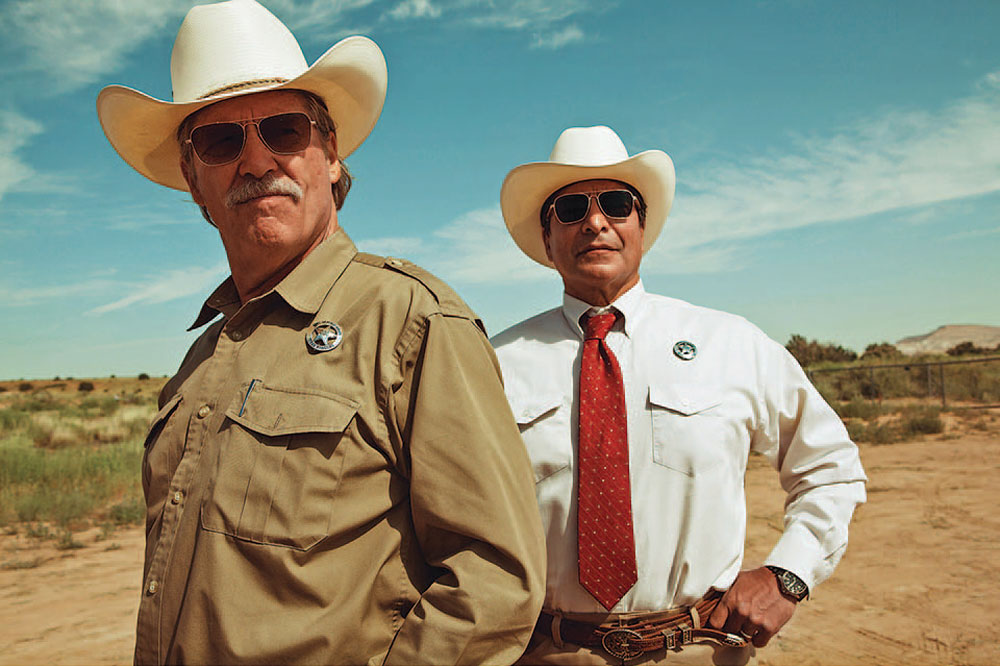
Bridges and costar Gil Birmingham in the 2016 critical smash Hell or High Water (PHOTOGRAPHY: CBS Films/Photofest).
C&I: Only the Brave. Not a western, obviously, but certainly a movie born out of the West. Same goes for another great film you recently starred in, Hell or High Water — a West Texas tale filmed in New Mexico. Could these be called modern westerns in any way? Do you think the western genre is evolving much like the West itself continues to evolve?
Bridges: [Lengthy pause.] Sorry, just one sec. [Bridges takes a call and reacts to good news.] Oh, great! That’s terrific. [Back to the interview.] Sorry about that. That was my wife. She just told me our bees are here.
C&I: Your bees?
Bridges: Yeah, we just got a bunch of bees. Our wall was infested with bees, and we had a beekeeper take out this big hive from the wall of our house. And the whole thing with bees is that you have to remove them for a certain amount of time so they forget where they were or they’ll just come right back to the exact same place. And now he’s brought them back and built a little house for them.
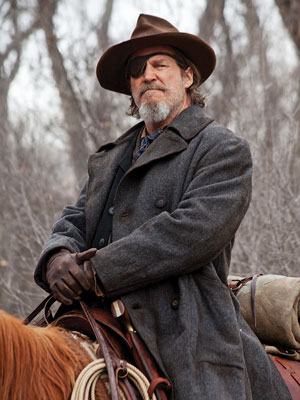
C&I: Lucky bees. Sounds like you just got yourself a whole new hive of fans.
Bridges: Hey, I’ll take ’em. [Laughs.] ... Anyway [back to westerns], I was just thinking — True Grit. I remember when the Coen brothers talked to me about being in that, and I couldn’t figure out why they wanted to remake this classic movie with John Wayne. I said, “Why do you wanna do that again?” They said, “Well, have you read the Charles Portis book?” And I hadn’t. Well, it turns out the book is just like a Coen brothers script. It’s just wonderful to read. And I think they did a helluva job on that movie.
C&I: Did you feel The Duke smiling down on you while you were doing that one?
Bridges: [Pause.] Uh, how do you mean?
C&I: Taking on one of the great Western roles, Rooster Cogburn, originally played by The Duke himself.
Bridges: Oh, OK. The Duke. [Laughs.] I thought you said, “The Dude.”
C&I: I’m sure that Lebowski was smiling too. What about Mr. Wayne?
Bridges: I don’t know about him smiling down. I’d certainly seen the [original] film, but the focus was just to do it as fresh as I could. So that’s how I went at it.
C&I: I’m sure The Duke would agree you wear the hat and eye patch very well. Would you agree it’s more fun to act on a horse?
Bridges: Sure. Especially when it’s a real one. Y’know, in westerns they do it all the time where you sit on these ladders and pretend you’re on a horse when you’re not. You’re on a ladder. The first time I saw that was when I was about 7 or 8 years old visiting my father on a western set. And I see my dad and maybe three or four other guys all perched on these ladders with reins coming up into their hands. And they’re all kinda moving slightly as if they’re on horses. And I could not stop laughing. There’s my father up there bobbing on this ladder pretending he’s on a horse. And I was laughing so hard they finally had to take the kid off the set.
C&I: Was that actually happening on the True Grit set all those years later? The old ladder trick?
Bridges: Oh yeah. In fact, I’ve got a book — I make these photograph books from movies I’ve done. And I made one for True Grit. If you go to my website [jeffbridges.com], you’ll see a digital copy of the book with all these behind-the-scenes shots. Including some guys up on ladders like I’m talking about.
C&I: But not Jeff Bridges up on a ladder.
Bridges: It’s funny — the [Coen] brothers asked me, “Hey, do you think you could really do it?” I said, “What do you mean?” They said, “Do you think you could really ride — while shooting guns with reins in your teeth?” I said, “Yeah, I’ll try that.” And that was way more fun.
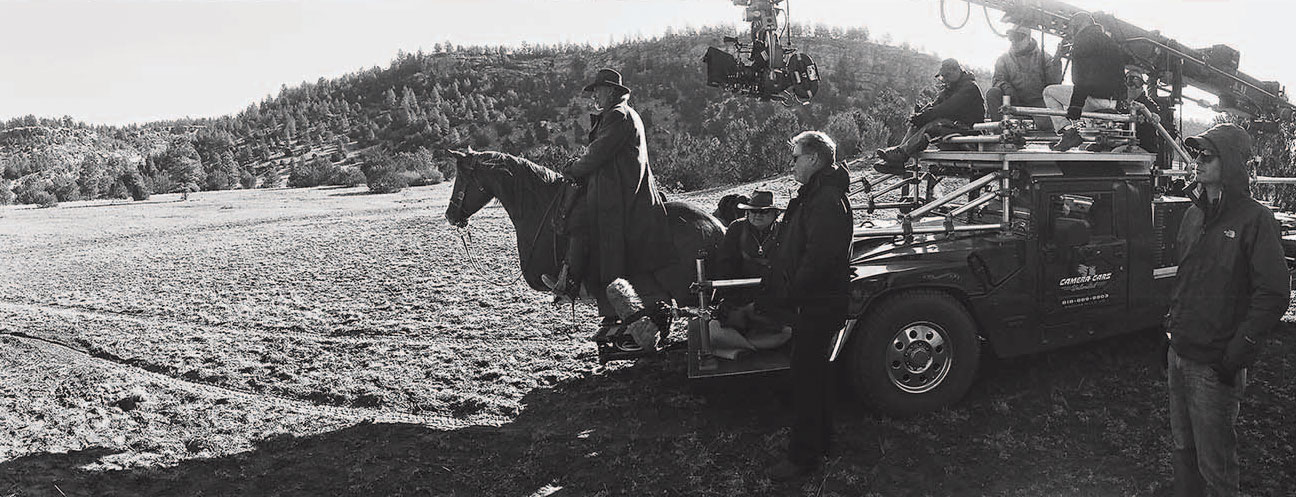
Filming of one of Bridges’ favorite scenes, in which he shoots two guns with the reins in his teeth (PHOTOGRAPHY: Courtesy Jeff Bridges).
C&I: Movie sets can be oddly stressful, monotonous places. Is photography the perfect tonic for a leading actor between takes?
Bridges: Yeah. Other people read or knit sweaters or something. But I started taking photographs back in the early ’80s — I think with Starman. That’s the first book I made for the cast and crew. I shoot with a panning still camera called a Widelux, so the shot format is very wide. And I’ve been continuing to do that. Not on every movie, but most of them. Unfortunately, I didn’t do it with Only the Brave. I wasn’t really there long enough to capture it all.
C&I: Do you do much riding — on real horses, not ladders — even when the cameras aren’t running?
Bridges: Not as much as I’d like to these days, but I love it. It was something I’d done with my dad and our family since I was a kid. We used to have a bunch of horses in Montana [on Bridges’ ranch near Livingston]. We don’t anymore. But we certainly had some great fun riding there too. We had cattle and all of that as well, but we let all of those go. We did rent a bunch of goats recently to get some knapweed under control.
C&I: Is Montana still a favorite family escape?
Bridges: Yeah, we get out there as much as we can, which is never enough. We’re going there in a week for my daughter’s wedding. She’s getting married on a ranch. It’s been pretty smoky up there lately, and I’m praying for a little rain. Among other things, the smoke can certainly distract from all of that beauty.
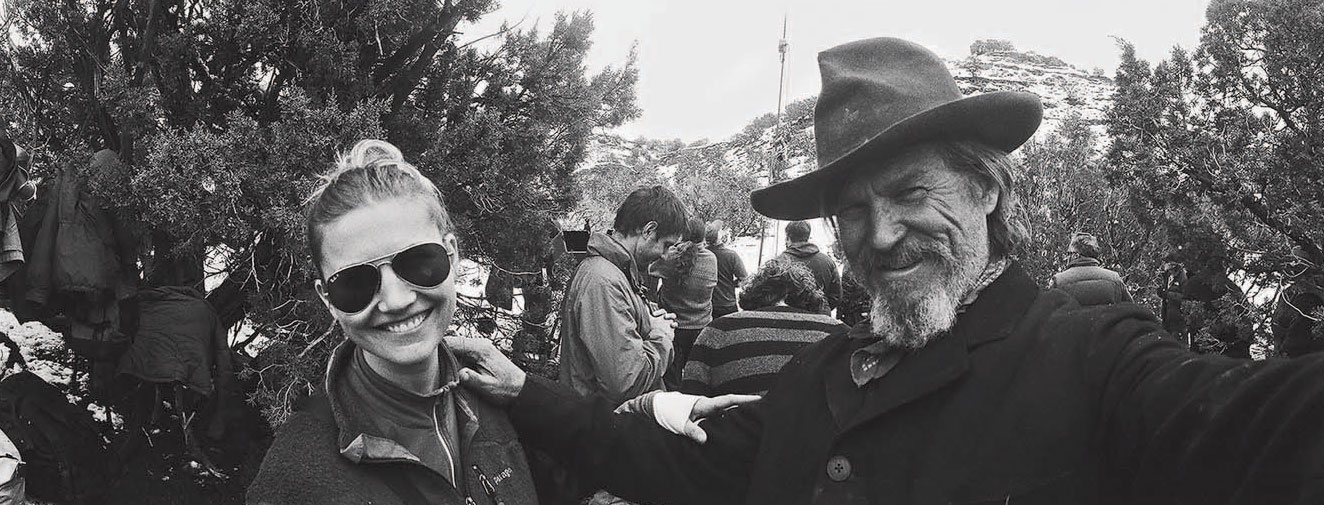
Jeff Bridges with his daughter Jessica, who served as his assistant on set (PHOTOGRAPHY: Courtesy Jeff Bridges).
C&I: Acting, music, photography. Your creative passions run far and wide. James Lipton question, but if you could come back again and do something else, what would it be?
Bridges: [Long pause.] I don’t know. Maybe an inventor?
C&I: Not a fire chief?
Bridges: Let’s stick with inventor.
C&I: Let’s talk about your charity work. Since the early ’80s when you cofounded the End Hunger Network, you’ve been deeply involved with initiatives to end childhood hunger — including becoming a national spokesman on the subject. Was there a seminal moment that led you to this cause?
Bridges: That goes back over 30 years ago to a seminar I took with Werner Erhard — the guy who created [the personal development training workshop] est as well as an organization called The Hunger Project. I was at an early seminar for The Hunger Project and he presented us with the facts about what keeps hunger in place. And now that you know these facts, what do you plan to do about it — if anything? And I thought, Well I don’t wanna live with the facts knowing that I can make a difference and not do anything. That just didn’t feel right. So that’s how it started for me.
C&I: Thirty years later, is there still a misperception among many Americans that hunger is more of a foreign issue than a domestic one?
Bridges: Yeah, I think there probably still is. But I also think we’re slowly getting the message across. I was recently up in Montana where I met with the Western Governors’ Association about ending childhood hunger in their states. I’ve done some work with Gov. Steve Bullock there, and met with nine or ten other Western governors about ending childhood hunger and what that means in their respective states.
I think one of the things that’s most gratifying is that it’s a total bipartisan issue. Y’know, Gov. Sandoval in Nevada, who’s a Republican, is just as forthright about ending childhood hunger in his state as Gov. Bullock, a Democrat, is in Montana. So it’s wonderful to bring these two ideologies together, and let’s figure something out that would behoove all of us.
C&I: How could something like this not be bipartisan?
Bridges: Right. Exactly. I can’t think of anything more patriotic than taking care of our kids. I mean, that’s the future of our nation. And what’s interesting about hunger—we made a documentary about it several years ago called A Place at the Table that addressed this, and we hope to make another—is that each state, town, and community is facing its own unique set of challenges with this issue.
I was up in the Blackfeet Reservation in Browning [Montana] talking to them about hunger on the reservation, which is really an important issue, and finding out the great work they’re doing up there to turn things around tailored to their particular community. They’re working with an organization called Share Our Strength and their No Kid Hungry campaign that I’m the national spokesman for.
So I’m hoping that we can spotlight that and show best practices, and how different communities are effectively dealing with it.
C&I: What would you say is the biggest challenge theses days in fighting childhood hunger?
Bridges: Creating the political will. And not just at the highest levels, but at every level. I remember when I first got into dealing with this issue and learning about world hunger and what was keeping it in place. It wasn’t a matter of food supply. Or money. Or know-how. We have all that. What’s missing is the political will. And of course our politicians are supposed to represent us — so it finally gets down to the will of each of us as individuals. Y’know, what are we willing to do to address this terrible thing — and not just make a hundred-buck donation to scratch your guilt itch, but something more sustainable that fits into your life.
I’m into movies and I talk and do interviews like this. So this is kind of what comes naturally to me. And every one of us has a different version of that. That’s why I love the title of that organization — Share Our Strength — as a strength that we can share toward creating the most beautiful world. It’s kind of like making a movie. It takes everyone bringing all of these different strengths and unique talents to the table in a joint effort to create something meaningful.
Which reminds me of this wonderful metaphor introduced by inventor Buckminster Fuller that I came across back at that Erhard seminar 30 years ago. About this thing called a trim tab. Do you know what a trim tab is?
C&I: I know we’re all about to find out.
Bridges: It’s this simple, elegant, little thing. It was created by engineers for these giant oil tankers with these enormous rudders that required too much energy to turn in order to steer the ship — from all the water resistance. So they came up with this device called a trim tab, which is just a tiny little rudder on the big rudder that effectively turns the big rudder, which turns the ship. Today, these little trim tabs are used on airplanes and all kinds of stuff. And Buckminster Fuller likened them to how individuals affect society in their own big-little way. That each of us is, in fact, a trim tab. That’s what Bucky Fuller has on his gravestone: “Call Me Trimtab.”
C&I: It’s the little things that can make a big difference.
Bridges: There you go. Like I’m talking to you about this. You’re gonna spread that. And hopefully all of us are going to turn this ship in the direction we wanna go.
C&I: Hey, we’re on board.
Bridges: Cool, cool, man. Let’s go!
Only the Brave hits theaters October 20. Visit jeffbridges.com to listen to the actor’s musical projects, view his on-set photography, and find links to the charitable organizations and projects he supports.
Jeff Bridges is on the cover of C&I's Nov/Dec 2017 issue. Click here to get your copy today!



